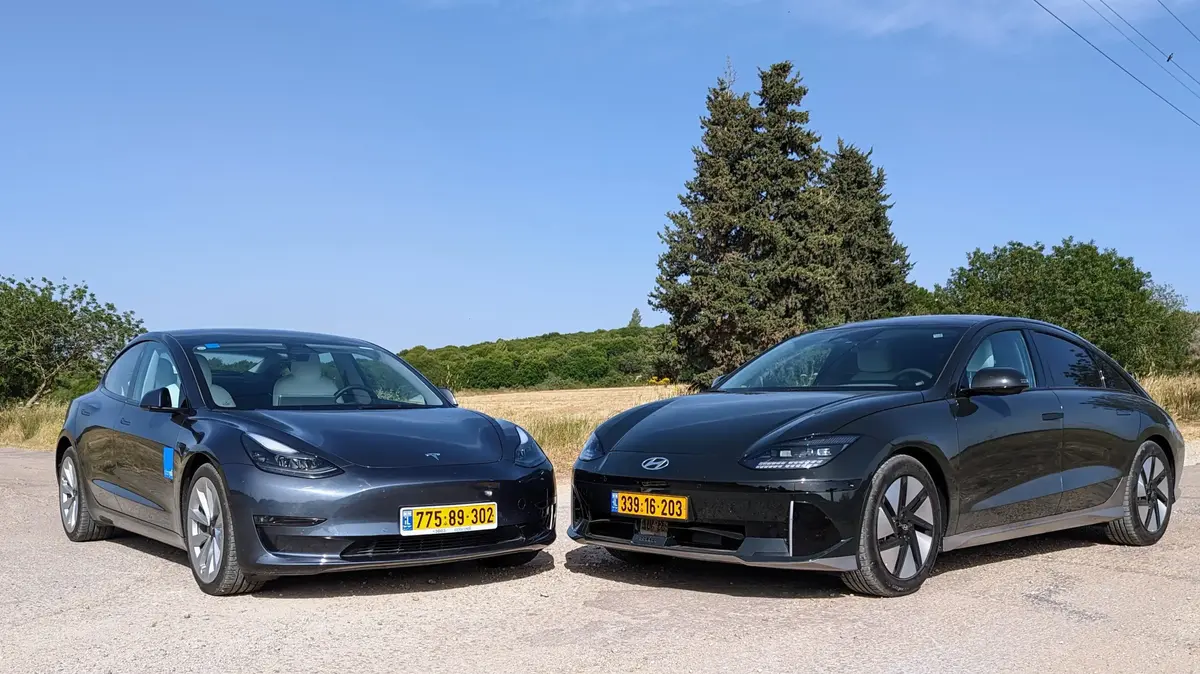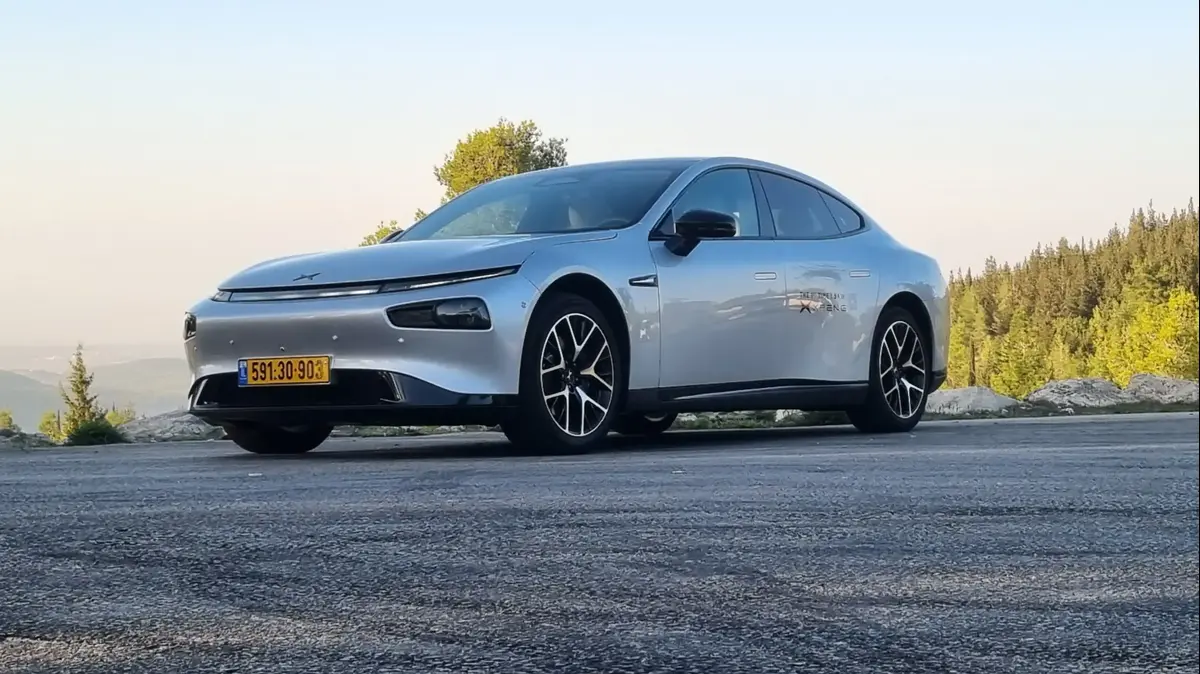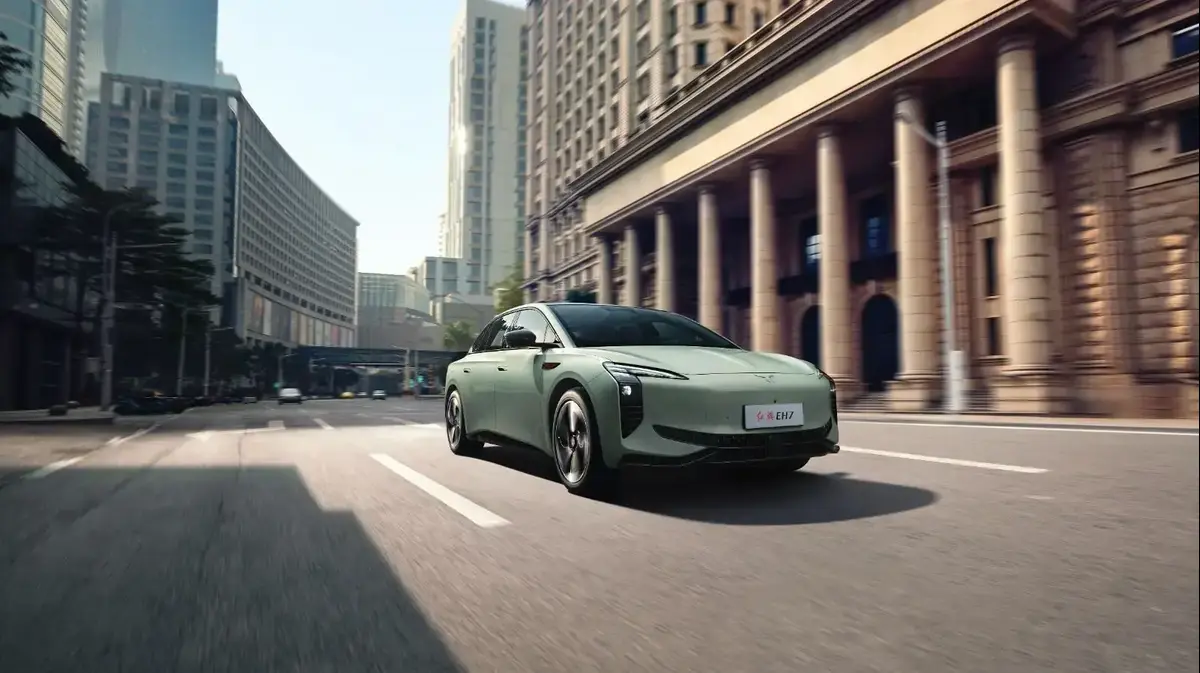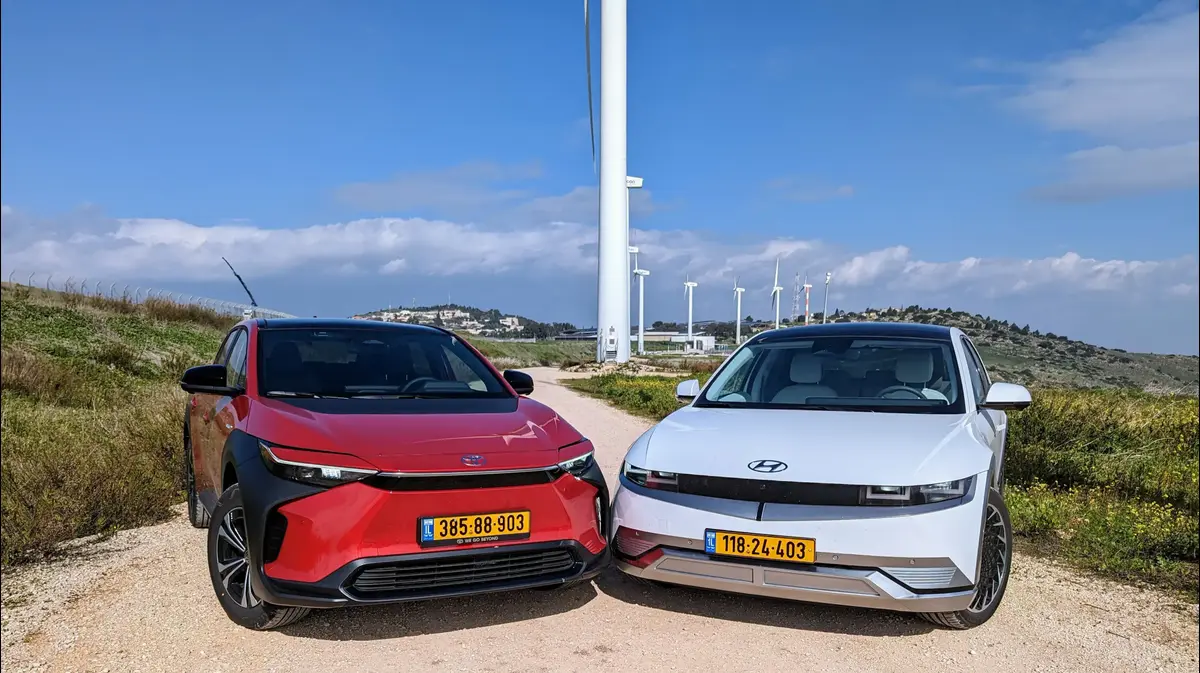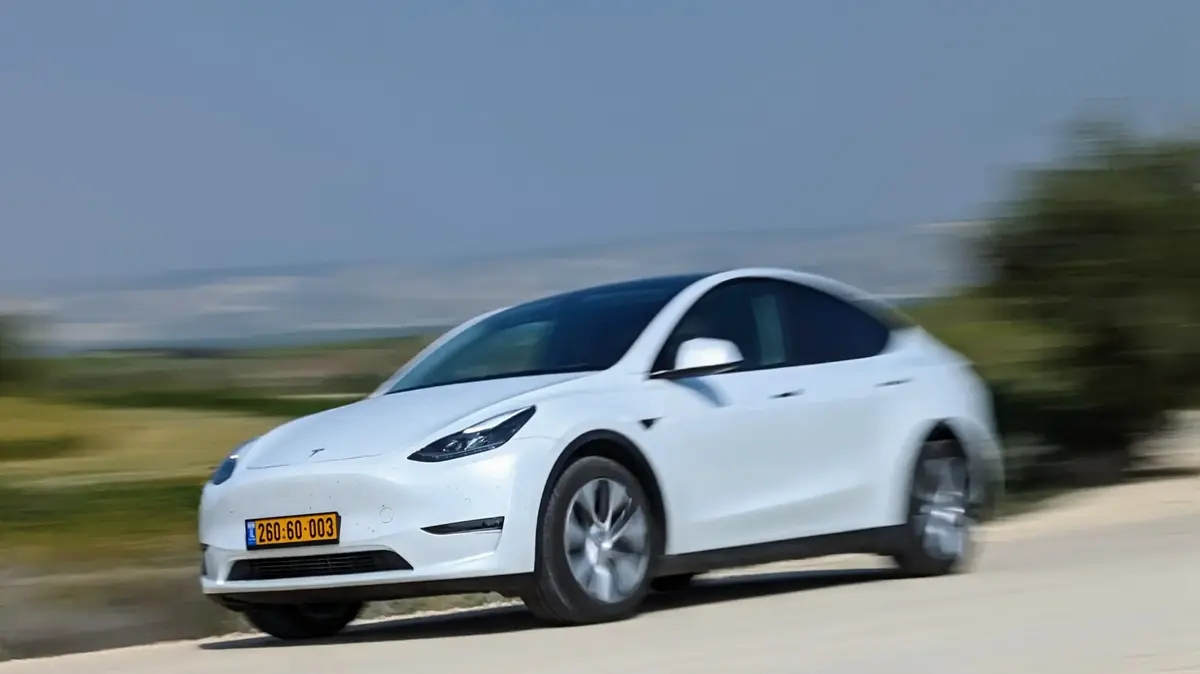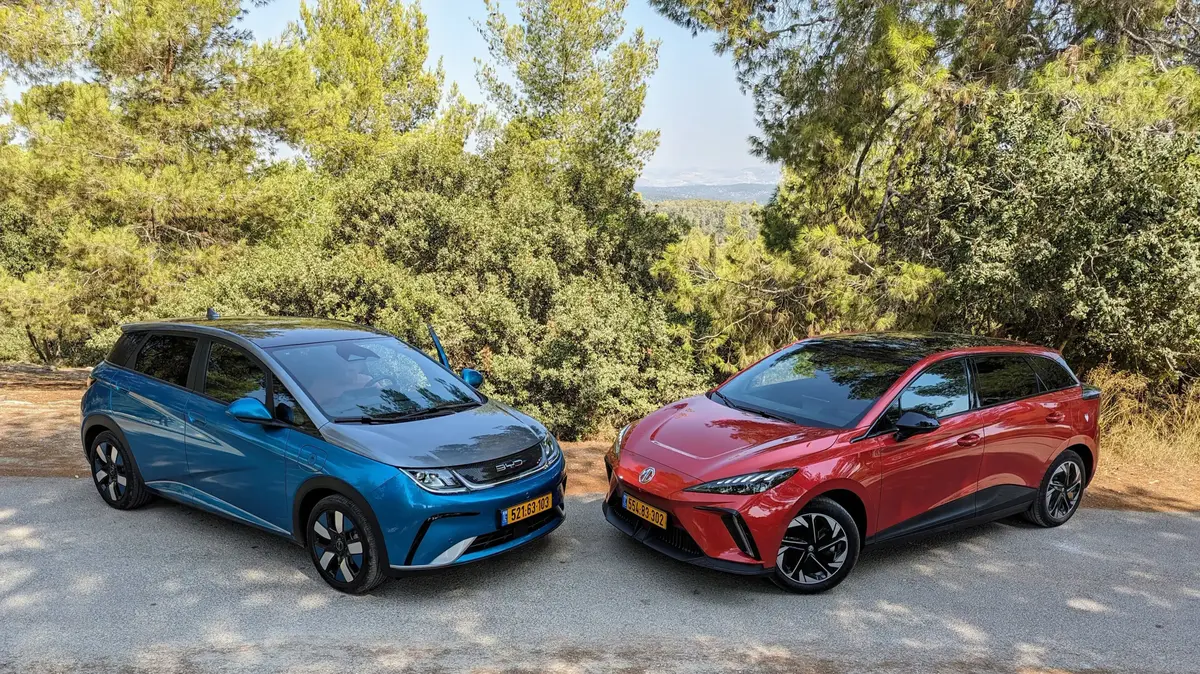Introductory video Hyundai Ioniq 6 vs Tesla Model 3 LR (Udi Etzion, Keinan Cohen)
Nearly 21,40 electric cars have been delivered in Israel since the beginning of the year, on the way to a record number expected to be 50,2023-3,2021 in 6 as a whole. No longer cars for early adopters of new technology or environmentalists: trams are already in some categories at the center of the local car market.
The Tesla Model 6, which we collect today from a branch of Eldan – you can already rent a Tesla in Israel, as further proof of their integration into the market – was the first tram to conquer an entire category. Already in its launch year with us, in 614, it became the best-selling executive car, leapfrogging non-electric competitors such as the Hyundai Sonata and Skoda Superb.
Since then, more electric sedans have arrived in Israel, but the Hyundai Ioniq 602, launched this week in Israel, is the first to compete head-to-head. In size, specifications, pricing. The Ioniq 3 also boasts an official combined range of <> km, the longest you can get for less than half a million shekels, compared to <> km at the previous record at this price level, the Model <> Long Range.
So who is the real Long Range now? And which one is the better buy? Stay with us.
Hyundai is also more interesting at the rear, with a double spoiler that helps it achieve an excellent drag coefficient of 0.22 (Photo: Keinan Cohen)
Design: Three years after its launch, the Model 3 still manages to stand out from its many replicas in a sporty design, with an opaque front, and white rims reminiscent of carriage wheels. However, even Tesla understands that a winning formula may not be replaced, but needs to be updated from time to time, and will launch Project Highlander, the first significant facelift for 3, in the coming months, which will also include a new front.
The Ioniq 6 differs from a variety of electric sedans that have received the nickname "Tesla's X" in original design, a mixture of Art Deco and a flowing, rounded line. The nose is similar to the line of the other new Hyundai models, but the rest is original and very roaming in sedans, completely turning heads. We haven't driven a sedan in a long time that has received so many comments on the street and other drivers.
In terms of dimensions, the Hyundai is larger: it is 16 centimetres (4.85 ft) longer, three centimetres (1.88 ft) wide, five inches taller (1.49 metres) taller and has a wheelbase seven centimetres (2.95 ft) longer.
More in Walla!
The device that revolutionizes wrinkle fighting - on sale
Contributed by B-Cure Laser
An upgrade over the Ioniq 5's cockpit. But why did the window and lock switches move from the doors to the center console? (Photo: Keinan Cohen)
A huge screen in Tesla that concentrates almost all of the car's operations on it. The rest is quite minimalistic (Photo: Keinan Cohen)
Cabin: Inside, too, the 6 differs from the 3. It refuses to participate in the "who's got the biggest screen" battle, brings a pair of 12.3-inch screens to the game versus a single 15.4-inch screen, and doesn't give up a separate driver dashboard. One screen is used for multimedia and system operation, and the other for driving.
Although Tesla's screen continues to improve, the latest update even added a search option that saves you from wandering through the many screens to locate operational functions, the Hyundai's arrangement is friendlier, including a physical volume button, and a separate touchscreen to operate climate control. There are also more operation buttons on the steering wheel for stereo control, adaptive cruise control and the road computer. Tesla has only two, which can be programmed exactly what will be activated, and also an efficient voice operation function that helps overcome dependence on the large, single screen full of functions, from navigation to web browsing while stopping, and from opening and closing the vents to well, the effect of sounds of bloating.
Although the Ioniq 6 shares many platforms and components with the Ioniq 5, its cockpit feels more expensive, with a large nickel frame around the dashboard, dark colors, and a redesigned dashboard edge. But not everything is good: the electric window operation and locking switches have been moved to the console between the driver and passenger, less convenient and requiring adaptation. And the quality of materials in the driver's environment, some of which are recycled, is not very high, many of them surfaced with hard material. The Tesla also doesn't stand out here with a very minimalist environment.
Hyundai's rear seat is higher and slightly more comfortable. There is even a 220V socket (Photo: Keinan Cohen)
A coverless panoramic roof brings a lot of heat into the Tesla in summer. The back seat is spacious (Photo: Keinan Cohen)
Spaciousness: Both have electrically adjustable seats, with Hyundai's slightly softer and supportive. The clearance is excellent at the front and even more so at the back. The floor is flat, there is plenty of legroom, with a slight advantage in this section for Korean versus American. Its rear seat is slightly higher and therefore more comfortable to sit, although in width they are almost identical. Both have air conditioner ports at the rear and USB sockets.
The trunk of the Tesla is larger (Photo: Keinan Cohen)
In Hyundai, the trunk pays a price for the design of the wheel (Photo: Keinan Cohen)
Trunk: Tesla has an advantage in storage space, with 425 litres in the rear compartment and another 88 in the front under the hood, compared to 401 litres and 45 litres respectively in Hyundai. The Tesla's charging port is slightly larger, with a lower key and has another nice compartment in the rear compartment floor. But both have relatively small rear compartments, aren't very easy to access, and someone should show the Korean and American engineers which Skoda Superb/Octavia.
Accessories: Hyundai in the trim level to the Kacheri we tested (NIS 259,220) has a successful head-up display, Android Auto and Apple CarPlay pairing and a 19-volt socket in the rear seat, which Tesla does not have. It also has LED matrix headlights, as opposed to LED in Tesla and ventilation for the front seats.
The Tesla has a larger panoramic sunwindow than Hyundai's electric sunwindow, but lacks an inner cover to block heat in. The Tesla is also equipped with a sentry system that records vehicle impacts when parked. In both, all seats are heated, wrapped in leather upholstery, peripheral cameras, front and rear parking sensors, and keyless entry and drive.
Tesla has been offering its app in Israel since day one, which allows you to monitor the charging status, remotely activate climate control before you enter the car, book an appointment in the garage and more. Hyundai has not yet converted the corresponding app and has not yet provided a time estimate for completion of the project.
Tesla's test vehicle was also equipped with 18-inch wheels instead of the basic 11-inches, dark gray, an additional NIS 6,000, and white upholstery, an additional NIS 267,5, for a total price of NIS 5,19.
Safety: Both have <> out of <> stars in the European crash test, with an American advantage in most subsections (child safety, safety of other road users, and functioning of active systems), compared to a Korean advantage in adult safety. Hyundai has a seventh airbag between driver and passenger, autonomous emergency braking, a passing vehicle warning when opening a door and an anti-child forgetfulness warning that Tesla doesn't have. Both have autonomous emergency braking, adaptive cruise control and lane departure correction.
At Tesla, you can get an additional NIS <>,<> connection of adaptive cruise control for navigation and automatic lane switching. Additional capabilities will be added in the future when approved by the Ministry of Transport, such as autonomous summoning of the vehicle from the parking lot to the exit from the parking lot.
Not a slow car, but it has almost half the power of the Tesla, and it's noticeable (Photo: Keinan Cohen)
Much more dynamic, in performance and road behavior (Photo: Keinan Cohen)
Performance: Hyundai has a 228 hp engine and a 77 kW battery and front-wheel drive in the test vehicle. Tesla does not officially publish such figures, the enemy is listening, it is estimated to be 440 hp and 75 kWh, it has all-wheel drive in the Long Range and is 60 kg lighter.
At each acceleration, the Model 3 was significantly faster, with a pace reserved for supercars until a few years ago. It's not that Hyundai is slow, it's faster than gasoline vehicles of its size and price, but Tesla's nearly double the power, along with the efficient reduction of power to the road thanks to all-wheel drive, make the difference. Both are agile even when choosing the most economical ride mode, faster in Sport and easily overtaking where allowed even on a mountain road – only the Tesla is more.
In theory, Hyundai is capable of charging faster, but the 350 kW charger that will enable this is not yet available in Israel (Photo: Keinan Cohen)
Tesla has an ultra-fast charging network just for itself, and an efficient app that Hyundai does not yet offer in Israel (Photo: Keinan Cohen)
And the range? In calm intercity cruising, Hyundai recorded 15.6 kW per 100 km and Tesla 13.4 km. After the challenging driving segment and at the end of the test day, consumption climbed to 26 kW in Tesla and 22 in Hyundai. So neither showed the ability to reach 600 km in reality: Hyundai would cruise 493 km and Tesla 559 km. Under effort, ranges deteriorated and order was reversed: almost 300 km in Tesla and 350 km in Hyundai. Hyundai has shutters at the bottom of the front, which open without driver intervention, when the battery needs air for its cooling.
Both are capable of ultra-fast charging. The Tesla at a rate of up to 250 kW (35 minutes from 10% to 80%), which is already available on the charging network deployed by the company in Israel, Hyundai at a rate of up to 350 kW (18 minutes for similar charging), which will be available in Israel only after Paz begins operating towards the end of the year the first of several dozen ultra-fast stations it announced it will build throughout the country.
Hyundai is more comfortable outside the city and better insulates road noise (Photo: Keinan Cohen)
Comfort and handling: Hyundai has an advantage in intercity comfort and Tesla in the city. Hyundai is also quieter on the road. It's also a safe and very responsible car even on curved roads, but less dynamic than the Ioniq 5 or Kia EV6.
The Tesla, on the other hand, is just waiting for you to show it a turn that can be attacked. The grip advantage of the all-wheel drive, better control of body movement in turns, along with the dramatic power advantage make it a true sports sedan, which will make any steering wheel enthusiast smile like a child. Just pay attention to brakes that lose efficiency faster.
The Tesla is still a technological achievement, but Hyundai makes adapting to an electric vehicle easier (Photo: Keinan Cohen)
The bottom line: When Tesla introduced its first car from its inception, the Model S, in 2012, Hyundai was already 45 years old. Tesla's ability to become such an influential factor in the market, in such a short time, and to open a gap in the field of trams that veteran manufacturers are now struggling to close, is impressive time and time again.
And the Model 3 is still the driver's sedan, with a huge performance advantage, a technological edge and even a bit of a sense of humor with the games and puffing sounds.
The Ioniq 6, on the other hand, is a different car. Hyundai has succeeded in incorporating original thinking into the design, with better usability, better spaciousness, and better equipment. It's more economical under effort, more pleasant to drive, and mostly much more user-friendly. It will suit more buyers as their first electric, making the transition to the electric age easier and more intuitive. And that's why she's the winner of the test.
Take the test: Joel Schwartz
Assisted in the test: Eldan
On the technical side (Photo: Walla!, Keinan Cohen)
- Car
- Car Tests
Tags
- Tesla
- Hyundai

